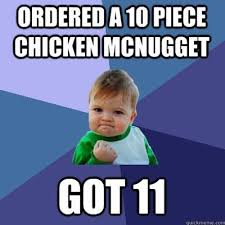Whether you've invested in cryptocurrency or not, you've probably heard someone talk about the "infinite potential" of blockchain, or the many new things we will be able to do with it.
One of those things is starting to get very popular. It's called the non-fungible token (NFT).
Welcome to your complete NFT guide.
Here, we will cover what NFTs are, how they work, and how an NFT could turn you a profit one day.
Even if you're not ready to dive into NFTs yet, there are some practical steps you can take with your investing portfolio to prepare for the day when NFTs are commonplace.
We'll get to that in a moment. First, let's begin to understand this new form of investing.
What Is an NFT?
How many paintings at the Metropolitan Museum of Art do you think you could replicate yourself? If you saw Gerhard Richter's "Blood Red Mirror," you might say at least one.
The painting is nothing more than a rectangle of red paint, though it was a personal challenge for the artist to apply the paint to the canvas while looking at it through a mirror.
Something about the particular artist, how he did it, when he did it, why, and who he sold it to, made the painting worth $1.1 million.
There's a word for all those fortunate elements coming together to make something valuable: non-fungibility.
Bitcoin (BTC) and dollars are fungible because you can trade bitcoins for bitcoins and dollars for dollars.
Not so with NFTs. Each NFT has its own inherent value based on blockchain and perception. No two are alike.
"Blood Red Mirror" was non-fungible, because there was nothing like it. That is to say, even though you could make a convincing duplicate, there was nothing like the original red paint slab crafted by this specific person at its specific place and time.
So, it demanded a certificate of authenticity and landed in a major U.S. art gallery. Today, the art world is not astonished at the painting's value. It's passed the test of public scrutiny, and now it hangs at the Met.
Why am I telling you all this?
Well, it used to be that non-fungibility was limited to real estate, diamonds, baseball cards, and other physical assets.
But the set of non-fungible items is about to expand drastically, thanks to NFTs...
How NFTs Work with Blockchain
NFTs can serve different purposes when it comes to investing. An NFT could give you the rights to something - songs and domain names are good examples. Or you could be investing in a "package" of content pre-programmed to be scarce, similar to Bitcoin.
Those "packages" are where the money is right now, which we will get to in a moment. But to understand those, we should first talk about how NFTs can work as certificates of authenticity.
Whoever owns "Blood Red Mirror" owns a physical certificate of authenticity to prove it's not a copycat. So, which is worth more? The painting or the certificate?
Imagine a cat burglar takes the painting from the museum but forgets to obtain the certificate of authenticity. If they end up in a court of law, all the museum would have to do is produce the certificate to prove it is the rightful owner.
The certificate is inextricable from the painting. The thief has no way of proving the painting's legitimacy without that special piece of paper. It's the same with any other art, historical artifacts, rookie cards, and more. They are non-fungible, or not able to be replaced, and you usually want to have a seal or certificate to prove they're legit.
A non-fungible token is simply the digital version of that. Mind you, you should not think about this as some equivalent to "buying" a star or constellation, or something. This has the potential to be much more valuable and secure than a piece of paper with your name on it.
New Extra Income Hack: This could be your shot to collect $1,000 to $5,000 a week - regardless of how volatile the markets are. WATCH NOW.
The fact that it is digital and not physical makes the question of its value much more interesting. Obtaining non-fungible tokens on physical assets would be an even more secure means of proving ownership than a physical certificate that can be forged.
That's an advantage to owning a blockchain-based certificate of authenticity rather than a paper document.
An NFT goes on the blockchain, a digital ledger that records all transactions with a timestamp that cannot be altered by a third party. There is now a permanent record of it on a decentralized platform.
Our cryptocurrency readers understand this already, as certain cryptocurrency values are determined purely by scarcity and market enthusiasm.
The beauty of a blockchain is that no single government, business, pope, or king can dictate what the blockchain says. Counter to "fiat," blockchain runs on a network of servers around the world, completely decentralized.
Simply put, if you own something on a blockchain, digital cat burglars will need to muster some extra creativity to sneak past several extra layers of security. This will be extended from cryptocurrency to various items on the Internet moving forward.
But there is so much more opportunity in NFTs than security, when you start considering the range of digital assets that can be traded.
We also haven't yet gotten to the real investing meat of NFTs - the digital products. There are infinite possibilities here.
This is why the next decade could likely produce a class of NFT millionaires and billionaires...
NFTs as Collectible Items Themselves
Currency has become digitized, of course. Along with that, however, you get digital items that become valuable in a way similar to physical art.
The simplest way to understand this over the Internet is probably "memes," or viral pictures and animations that have permeated culture and are almost universally recognizable.
Some examples of super-viral "memes" are...
- "Grumpy Cat"

- "Success Kid"

- "This Is Fine"

One meme, an animation called Nyan Cat, sold for nearly $600,000 at an auction in 2011. Yes, NFTs have been around since then, but they are just now catching steam.
This is happening as people begin to realize the value of cryptocurrency and the increasing range of assets available for investing online.
It extends to so much more than images.
Think about all the brands, characters, styles, soundbites, social accounts, video clips, and other documents traversing the Internet. These are all digital assets, fair game for backing by NFTs. The list of items is potentially infinite.
The rock band Kings of Leon recently announced it would release its latest album "When You See Yourself" in the form of an NFT, one of the first bands to do it.
When you buy the album, you get the vinyl as well as a limited digital download for a $50 NFT. Due to the nature of blockchain, everyone who owns the deluxe NFT version of the album will have a unique, personal ownership of their copy. That is what makes NFTs so different from anything we have seen before.
In theory, one way the Kings of Leon album could make someone rich is if Justin Bieber purchases the album then sells it as "the copy of 'When You See Yourself' once owned by Justin Bieber."
Practically speaking, the NFT is both the album and the token; they are one and the same on the blockchain, insofar as the NFT unlocks the album.
This logic may apply to virtually anything on the Internet, as long as the value of an object is somehow universally accepted. Justin Bieber has a loyal fanbase, having sold 20 million albums in his career, so it's reasonable to assume his fans would clamor for an NFT that traces back to the pop star.
Music is an amazing use-case for NFTs, specifically because digital streaming seems to have devalued the work of musicians - one of the main revenue drivers for musicians also disappeared as live shows were postponed through COVID-19.
WARNING: It's one of the most traded stocks on the market every day - make sure it's nowhere near your portfolio. WATCH NOW.
Because NFTs are all unique by design, each one is a collectible. A product underpinned by blockchain has the potential to make an artist's work more valuable and even protect it from piracy.
This is a positive thing for creators overall. But it's not even limited to art.
Sports are a huge NFT market ever since NBA Top Shot entered the picture. It's similar to trading cards, but you get to own specific, memorable moments in video clip form.
One video of Lebron James shooting a 3-pointer is worth $250,000 right now. There are plenty of these to go around, some more rare than others.
This is different from owning the rights to specific video footage. What makes these NFTs "collectible" is the fact that they are limited, like copies of the Kings of Leon deluxe album. There will only ever be a certain number of them - the scarcer they are, the more valuable they could be.
The one who decides that is NBA Top Shots, just as a company like Topps or Bowman would have rights to the pictures on their baseball cards.
Now, if this all still sounds a bit "pie in the sky," you're not alone. There really is not anything in the past to which we can compare NFTs - besides rough analogies, like baseball cards.
Let's dive deeper into how this works.
How to Buy NFTs
NFTs are traded on several different marketplaces including OpenSea, SuperRare, Rarible, Nifty Gateway, and as we mentioned, NBA Top Shot.
They are mainly purchased on the Ethereum (ETH) blockchain, so ETH is the primary currency for buying them right now.
So, getting ahold of some Ethereum would be your first step to owning an NFT today.
If you have not yet begun to invest in cryptocurrency, the easiest way to do that would be to open a Coinbase account. Coinbase is an exchange where you can buy up to 50 different cryptocurrencies, including BTC and ETH.
From there, you can visit one of those many NFT exchanges, scan the merchandise, and pick something you like.
Payment will be similar to most other shopping experiences, but you would be using your Coinbase account - or crypto wallet, if you have one - instead of a traditional bank account or credit card.
How to Sell NFTs
The artist Grimes sold a bunch of her visual art for $6 million. Nike is also trying it with its shoes, having patented blockchain-based sneakers called CryptoKicks.
You can do it, too.
If you own something collectible that you think could be sold for a big ticket years down the road, you can buy NFTs for your own physical and digital possessions.
Here are some of the top NFT marketplaces you can look into:
OpenSea is the largest NFT marketplace on the web. In fact, it's one of the first places NFTs started to emerge. CryptoKitties - literal virtual kittens - were some the earliest NFT-based digital assets ever traded. The most expensive CryptoKitty ever was called "Dragon," and it sold for 600 ETH, or $390,000. Today, you can buy and sell everything from art, to cards, to domain names.
NBA Top Shot is exclusively a place to trade "moments" from the National Basketball Association. Every season, the NBA dishes out some of its best plays in video form, only a few seconds long. NBA Top Shot mints a limited number of those "moments" in NFT form, which can be purchased and potentially sold for more at a later date - if the player is a rising star, for example.
Where there's a market for collecting physical action figures, there is a digital one, too. CryptoPunks is a group of 10,000 unique, AI-generated pixel characters. Each one can be owned by a single person. At first, you could scoop one up for free if you had an Ethereum wallet. But they went fast, and now the average CryptoPunk sells for about $17,460.
SuperRare is a more fine-art-specific NFT marketplace. There you will find the latest masterful computer graphics and 3D-animations for sale. Pieces on the site trade for upwards of $30 million. The exchange simulates the brick-and-mortar art world, as owners name their own prices, some of them outrageous, and the market catches on if it wants to.
Rarible bills itself as the "first community-owned NFT marketplace." Like OpenSea, buyers and sellers can peruse the site for a range of quirky items. It's something like an eBay Inc. (NASDAQ: EBAY) for digital assets. The goal of Rarible is to be fully decentralized, so the site awards tokens called $RARIs that give its most active users a say in how the site is run. RARIs are distributed every Monday to anyone who made a trade in the previous week.
There is bound to be plenty more where these came from. Likely, you will find an NFT marketplace to suit your niche sooner or later.
But even if you're not ready to become a digital art connoisseur, there is still a major way anyone can prepare, and likely profit, from an NFT boom right now.
You might already know the answer to this. It's not rocket science. But this is of increasing importance to your portfolio...
The Easiest Way to Profit from the NFT Boom
We mentioned buying Ethereum (ETH) already. But we can't stress enough how big it will be as it grows with the NFT world.
Of course, we will be seeing plenty of other blockchain currencies and collectibles pop up in the future, but we are still in the earliest phases of adoption. Ethereum has only begun to see its growth potential.
It's one of the most popular cryptocurrencies right now, only second to Bitcoin, and it's unique enough to grow alongside Bitcoin in value.
Here is how Ethereum differs from Bitcoin.
Bitcoin is valuable for the scarcity that was programmed into it. There will only ever be a limited number of Bitcoin (similar to CryptoPunks).
Ethereum, on the other hand, is actually useful. Along with being a cryptocurrency, it is also an open-source software platform and programming language that runs on a blockchain.
It enables users to create "smart contracts" in their transactions - permanent ledgers. And along with that, software developers can also build and publish applications on it.
NFTs are only the start to the decentralization afforded by the ETH blockchain.
If you thought NFTs were complicated, there are innovations coming that we don't yet have words for.
For that reason, ETH is going to soar over the next few years. It's already managed to go from $90 to $2,041 within the last 12 months. But again, it's only the beginning.
Some are giving Ethereum targets of $10,500, $20,000, and even $50,000 over the next decade.
1 ETH goes for $1,578 today. But you don't have to buy an entire coin.
Just buy whatever amount suits your risk tolerance. As long as you're holding even a small percentage of ETH, it could go a long way to boost your portfolio in a few years.
The Digital Gold Rush of the 21st Century
Our resident Silicon Valley insider is recommending three under-the-radar digital coins as today's BEST crypto buys.
They're much smaller and more affordable than Bitcoin, with up to 10X the growth potential as Dogecoin in the coming years.
One is trading for just $5, and predictions suggest that by 2026, the price could sit at $24.42 - a 328.12% profit.
To learn about all three - and discover how even a small stake could transform into a small fortune in 2021 - click here.


